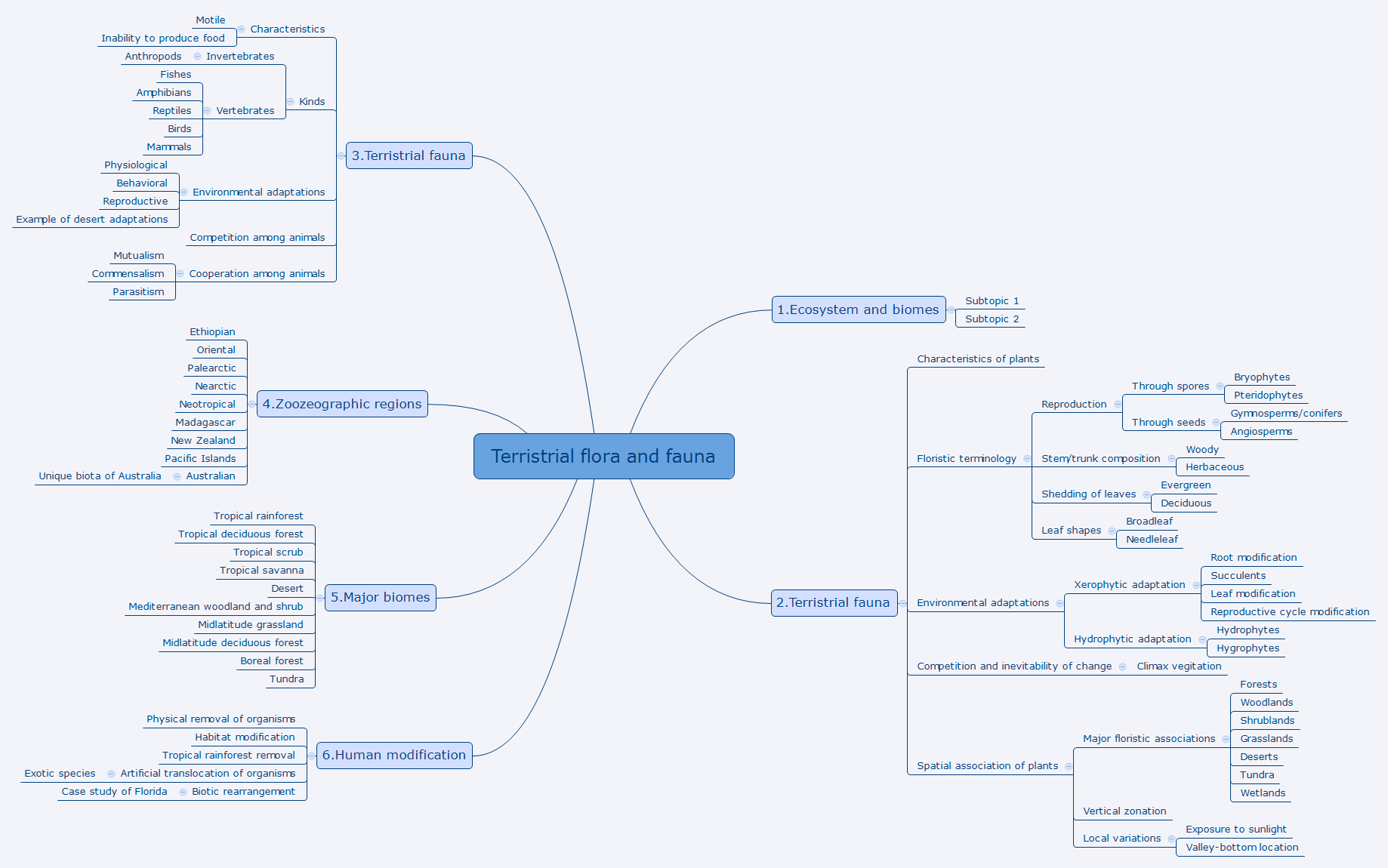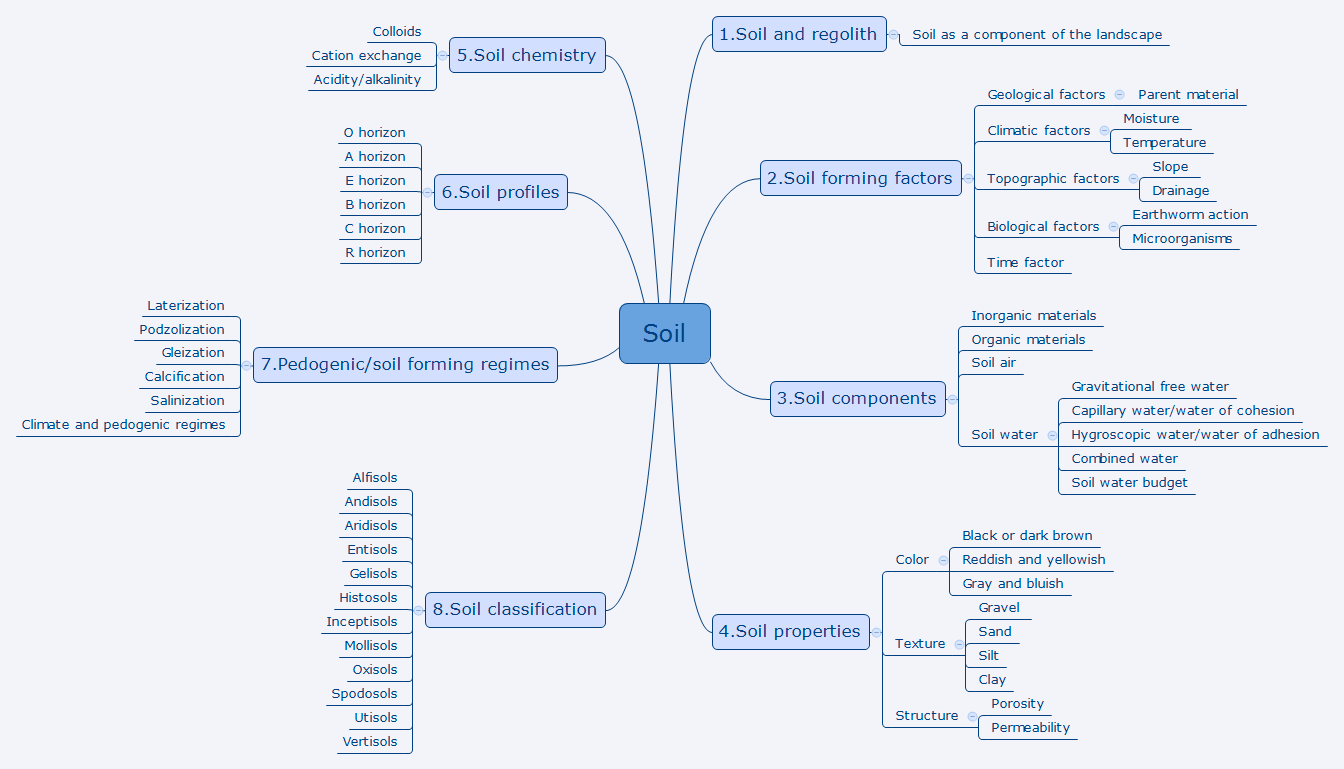Biogeography
Syllabus
Paper I
- Genesis of soils
- Classification and distribution of soils
- Soil profile
- Soil erosion,
- Degradation and conservation
- Factors influencing world distribution of plants and animals
- Problems of deforestation and conservation measures
- Social forestry
- Agroforestry
- Wild life
- Major gene pool centres
Paper II
- Natural vegetation
- Soil types and their distribution
- Deforestation
- Desertification
- Soil erosion
- Biotic, forest and wildlife resources and their conservation
- Land capability
- Agro and social forestry
Sources and Resources
- NCERT, Class XI Physical Geography
- GC Leong
- Mcknight’s Physical Geography
- Biosphere by K. Siddhartha
- Geography through Maps by K Siddhartha
- Any good reference Geography dictionary
- Physical Geography by Savinder Singh
- Atlas
- Issues of Geography and You
Strategy
Biogeography is relatively limited in scope and coverage. It has also got overlaps with paper II of the optional. Preparing this portion thoroughly gives you some added advantages. Not only you get few easy manageable questions in part A of paper I of Geography optional, the offshoots and applications of the knowledge gained by mastering this component are very rewarding for paper II of Geography. Also it shall help you in answering questions related to world biomes, distribution of flora and fauna, conservation measures etc asked in GS Paper I and III.
Moreover, by preparing this portion comprehensively shall give you at least 6-8 marks in prelims. So, it means that cost benefit analysis of this portion of the syllabus highly favors a comprehensive preparation of Climatology.
Focus Areas
The soul of the syllabus of Biogeography lies in understanding the key concepts of ecosystems, biomes, Zoogeological regions etc. You must focus on their key characteristics and criteria of classification. You have to be specially prepared with the terms and terminologies of the subject. Questions asked in the previous year papers like short notes on Ethiopian realm or Zoogeological regions required awareness of such terms that are not usually there in Indian books.
Moreover you need to thoroughly understand the factors that are play in the soil forming process. A parallel study of soil types in India can save your time and develop your understanding better. In fact you can make it a rule to think of all the concepts in the Indian context. UPSC has the habit of asking such questions in the past. You can be asked a question to classify and show the distribution of Indian soil types as per International Soil Taxonomy.
The subject can be a bit factual sometimes particularly in topics of soil classification, biomes, floral and faunal distribution etc but regular revision and practice can let you master the concepts.
Imperatives
To answer the questions related to Biogeography, and for that matter any of the components of Physical Geography, you need to have some basic tools and equipments without which your answers shall be blunt in their impact. So our list of imperatives here shall be a mere reiteration of what we had already told you with respect to Climatology.
While you prepare, your focus must be on the answer sheet that you you would write upon in the coming few months. Developing these tools now shall help you enormously then. So the imperatives that you must acquire during your course of preparation of climatology are as follows:
- Mind map of the topic
- Definition of all the terms and terminologies
- Knowing specific and relevant words that are used frequently for the topic
- Diagrams,figures and presentation to aid your presentation
- Examples of the phenomena; both at global and Indian levels
- Spatial distribution of the phenomena i.e. maps
- New developments if any
- Applications and exceptions
Mind-map: This is to remind us of the scope of the topic i.e. what all we mean to cover. It happens many a times that we lose a tab of where we started, what we are reading and for what purpose after we have entered deep into the pages of any chapter. Mind-maps avoid this situation and we are always aware of our position. Later we shall also demonstrate as to how mind maps can be used for quick revision and to write quality answers.
The mind map above gives you a fair understanding of the content of the topic. Now, you have to build upon this mind map and approach with our next step.
Definition of all the terms and terminologies: While reading the chapter, jot down all the terms and terminologies on a separate piece of paper. After you are through with the chapter expand these terms and terminologies in not more than 30 words. Avoid describing the whole concept. Just a line or two shall suffice. Here is an exhaustive list of all such terms and terminologies related to the mentioned topic. These are in addition to the terms and terminologies used in the mind map.
- Biota
- Plankton
- Nekton
- Benthos
- Plant respiration
- Biomass
- Nitrogen fixation
- Denitrification
- Producers
- Consumers
- Autotrophs
- Heterotrophs
- Primary consumers
- Secondary consumers
- Food pyramid
- Decomposers
- Biological amplification
- Pioneer community
- Primary succession
- Secondary succession
- Photoperiodism
Knowing specific and relevant words that are used frequently for the topic: Revise the terms and terminologies periodically and try to use them as much as possible in your answers.
Diagrams,figures and presentation to aid your presentation: One must master these to improve the outcome of learning and more importantly to impart weight to one’s answers in the paper. Although, Biogeography doesn’t require too many diagrams to learn, few important ones like that of soil profile, food chain, food pyramid, energy flow, biogeochemical cycles etc have to be leartnt by heart.
Examples of the phenomena; both at global and Indian levels: Your theoretical understanding is of no use if you don’t supplement it with examples. Enumerate as many examples for the concept as it shall improve your understanding as well as the quality of your answers. For example if you have understood the concept of soil formation, you must be able to give examples from all over the globe as well as from India.
Spatial distribution of the phenomena i.e. Maps: There is no substitute to Maps in Geography. Neither your knowledge is complete without maps nor your answers shall carry weight without them. Therefore, focus upon spatial distribution of phenomena.
New developments if any: UPSC has the habit of asking questions regarding latest developments in the field. For example, last to last year UPSC asked a question on Man and Biosphere Programme. You are supposed to keep a tab on such developments through a cursory view of news papers and magazines. Incorporate such information in your notes for easy reference and revision.
Applications and exceptions: The topics like agroforestry, soil erosion, conservation measures etc are application based topics. Moreover, they seem to be too generic and simple. However, in optional papers generic understanding won’t help much. Try to apply the technical aspects lerant in the topic to these issues so as to impart that geography look in your answers.
While you start with the strategy explained above, we assure you that you shall be getting some high quality questions in the coming few days. These questions have been designed to test your analytical skills and your ability to apply the knowledge that you have gained from your study.
To help you further, we have prepared mind maps that covers the entire syllabus of Biogeography. You can think of devoting not more than 5 days to cover this component. The last few topics have not been covered in mind maps. It is because of their general nature. We shall come up with short synopsis to cover these topics as well. Moreover answer writing practice shall get you cover them in due course of time. Till then try to understand all the technical concepts given in the following mind maps.
- Basic concepts

- Terrestrial flora and fauna

- Soil

Share your thoughts and feedback. Form a community and let us proceed in this journey 🙂
Join us and cement your preparation with the true guidance at your doorstep
Best Wishes
IASbaba





